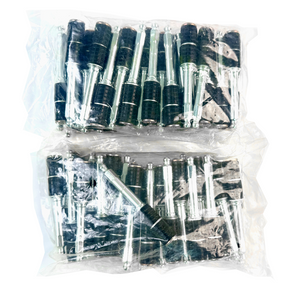When discussing the future of robotics, attention often focuses on AI algorithms, precision motors, or advanced sensors. Yet, a “soft” material—polyurethane—is quietly transforming the robotics landscape. From humanoid robots to industrial and service machines, polyurethane plays a vital role in joints, grippers, protective casings, and even internal components, offering flexibility, durability, and design versatility that hard materials cannot match. Its applications are improving human-robot interaction, enhancing safety, and enabling robots to operate in challenging environments.
Polyurethane for Biomimetic Robot Skin
As humanoid robots enter homes, hospitals, and public spaces, safe physical contact becomes crucial. Medical-grade thermoplastic polyurethane (TPU) provides the perfect solution. Soft, biocompatible, and durable, it cushions impacts and protects users while allowing intricate shaping through 3D printing or solution casting. Beyond protection, TPU films can integrate sensors for pressure, temperature, and humidity, creating “electronic skin” that enables robots to respond intelligently. For example, a care robot could sense a patient’s discomfort and adjust its grip automatically, demonstrating the warmth and adaptability that soft robotics materials bring.
Enhancing Dexterity with Polyurethane Grippers
Grasping irregular or delicate objects is a challenge for rigid robot hands. Polyurethane flexible grippers with porous structures provide excellent compliance, gently conforming to objects and distributing pressure evenly. This allows robots to handle fragile items like eggs or grapes, or even assist in medical operations with minimal trauma. The elastic recovery of polyurethane ensures rapid readiness for repeated tasks, making it ideal for industrial sorting, service robots, and surgical assistance.
Protective Armor and Lightweight Structures
Robots face harsh conditions—from dust and oil in factories to wind, rain, and underwater pressures. Polyurethane’s chemical resistance, impact resilience, and waterproofing make it perfect for protective casings. Composite materials such as polyester-polyurethane provide strength without sacrificing flexibility. Lightweight polyurethane composites also help balance robot mobility, energy efficiency, and toughness, absorbing impacts while reducing weight compared to traditional metals—critical for agile humanoid robots.
Frontier Applications: Smart and Self-Healing Polyurethanes
Advances in materials science have introduced shape memory polyurethane (SMPU), which can deform and return to its original shape under stimuli like temperature or electricity, enabling adaptive robot components. Self-healing polyurethane allows robots to repair minor damage autonomously, enhancing reliability in complex environments like deep-sea or space applications. Conductive polyurethane composites further allow sensor and circuit integration, simplifying designs and improving performance.
Industry Collaboration Accelerates Innovation
Global material leaders, such as BASF, are partnering with humanoid robot companies like Fourier Intelligence to explore polyurethane in joints, casings, and internal structures, accelerating its transition from lab research to commercial application. This synergy is shaping the fast-growing field of soft robotics and driving more practical, human-friendly robots.
Conclusion
Polyurethane is much more than a material—it’s a driver of innovation in robotics. It improves robot safety, dexterity, durability, and adaptability, while enabling cutting-edge features like shape memory, self-healing, and electronic skin. As robotics continues to evolve, the demand for high-performance, multi-functional flexible materials will rise, cementing polyurethane as an essential force in the era of human-robot coexistence. The revolution of soft, intelligent materials has only just begun.






0 comments